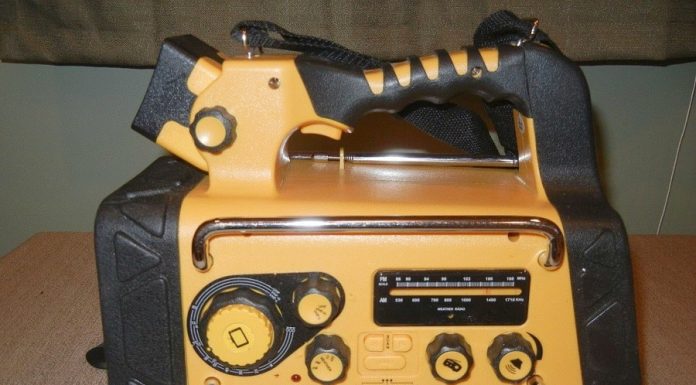There are two main types of home humidifiers: single room humidifiers and whole house humidifiers. Both accomplish the same goal: raising the humidity level in your home. However, in terms of form factor, cost, portability and maintenance, whole house humidifiers and single room humidifiers are very different. Read on to learn some of the key differences between the two types of home humidifiers.
Single Room Humidifiers
Casual consumers are most familiar with single room (aka portable or tabletop) humidifiers since they are the most visible. Portable home humidifiers are simple plug-in units that operate much like any other household appliance. They vary greatly in technology, capacity, output and size, but they all have their own self-contained water reservoirs and are powered by electric outlets.
Pros of Single Room Humidifiers
The obvious advantages of a plug-in humidifier are that they are affordable, portable and much easier to set up than a whole house humidifier. For these reasons, portable humidifiers are good for small homes and renters who may not be interested in investing in a central humidifier system. Portable humidifiers can easily be taken from room to room (i.e. kept in the living room during the day and brought to the bedroom at night) and can be stored during the summer, when they are no longer needed.
Cons of a Single Room Humidifier
In terms of dollar figures, a single room humidifier is less costly because you are only getting equipment for one room. But in terms of performance, a whole house humidifier easily gets you more bang for your buck. The cost for installing a high quality, reliable single room humidifier in each room of your house is higher in the long run than getting a single, central home humidifier system. The payoff is even greater when you have a bigger house. You can get cheap single room humidifiers, but you often get what you pay for. Inexpensive single room humidifiers have short lives, can be very noisy and must be refilled, cleaned and maintained on a regular basis.
Whole House Humidifiers

Whole house humidifiers integrate with your central heating, ventilation and air conditioning system to blow moisture through the vents in your home. Most whole house humidifiers also take water directly from your water line, obviating the need for a refillable water reservoir. They are also typically hard-wired, meaning that they won’t require an outlet.
Pros of a Whole House Humidifier
A whole house humidifier is more of a “install it and forget it” installation in terms of upkeep, maintenance and performance. Unlike a single room humidifier, which needs to be refilled and cleaned regularly, you can probably get by with maintaining your central humidifier seasonally, much as you would the rest of your HVAC system. Because it’s tucked away in your basement or attic, a whole house humidifier is far less obtrusive in terms of noise and clutter. Plus, they perform much better, allowing you to humidify your whole home quickly, efficiently and virtually automatically.
Cons of a Whole House Humidifier
You may need a professional to install your whole house humidifier. There’s a lot more involved in the installation of a central humidifier system than a portable one. There’s electrical work, plumbing and, of course, HVAC work, too. Relatively handy men and women can pull it off, but it’s certainly a weekend project, as opposed to a “just plug it in” affair. The upfront costs will be greater, too, but you’ll get more performance for your money. Lastly, if you have hard water, you will need to flush your system through with vinegar or some other deliming agent to prevent mineral buildup. Owning a whole house humidifier comes with the same concerns and responsibilities as any large appliance or installation in your home, such as a washer/dryer set, water heater or furnace.
Summary
The pros and cons of a whole house humidifier vs. a single room humidifier are logical and easily applicable to your situation. If you don’t own your home, the decision is clear: a portable home humidifier is for you. But if you do own your home and have a need to humidify the air in all of your rooms, a whole house humidifier may be a cost effective option.
Types of Single Room Home Humidifiers

When shopping for a home humidifier, it can seem like there are only two types of portable (aka tabletop) home humidifiers: cool mist and warm mist. However, the differences between the types and models of home humidifier are far more nuanced and significant than cool vs. warm mist. Read up on the main types of home humidifiers so you know what you’re getting for your money:
Vaporizers and Steam Humidifiers
Most warm mist humidifiers are actually steam or vaporizer humidifiers. These work by simply boiling the water to create steam. The water vapor and device itself can sometimes be hot enough to burn, thus this type of humidifier has declined in popularity lately. However, newer safety features are allowing warm mist humidifiers to make a comeback. The key advantage of a steam humidifier is that the boiling process eliminates much of the potentially harmful bacteria.
Impeller Humidifiers
A type of cool mist humidifier, impeller humidifiers separate water into a tiny droplets by passing it through a spinning disc. These works much like an atomizer does. Impeller humidifiers are effective at dispersing humid air throughout larger rooms.
Evaporative Humidifiers
Evaporative or wick humidifiers are one of the most popular models. These work by forcing air through a wet medium, such as a filter, pad or grille. The air picks up the moisture and then disperses it throughout the room. Because the air is filtered, this model is much better at removing minerals and other unwanted impurities from the vapor.
Ultrasonic Humidifiers
Ultrasonic humidifiers use the most recent technology. Similar to an impeller, an ultrasonic humidifier releases cool mist into the air by breaking up water into tiny droplets. This is done through high frequency vibrations pulsed into the water via a metal diaphragm. Unlike an evaporative humidifier, ultrasonic humidifiers do not typically use fans. As such, the noise it emits is often a more constant hum, which is more tolerable to some individuals.
Each type of humidifier has its own particular drawbacks and advantages. As a general rule of thumb, cool mist humidifiers—such as impeller, evaporative and ultrasonic—are safer for households with smaller children. However, it is important to use distilled water or buy a humidifier with a good filter system to prevent the dispersal of harmful bacteria and other microorganisms.




